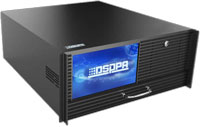

Leave a message



With the continuous improvement of conference system in the weak current industry, it becomes more and more important, which requires the system designers to change their previous concepts and consider the design from the perspective of application, the feasibility of the scheme from the perspective of the operator, and the stability of the system from the perspective of operation. These aspects must be paid attention to in design.
With the continuous improvement of people's requirements for the whole conference audio system and the continuous progress of science and technology,it is believed that the conference audio system will develop towards a higher and more scientific direction. So here are some ideas for optimizing the conference audio system:
1. Sound source
The microphone is the main sound source in the conference audio system. Other sound sources such as CD, DVD and cassette deck can be configured according to actual needs. The commonly used microphones in conference system are: hand in hand microphone and independent gooseneck conference microphone.
2. Signal transmission, processing and forwarding
The traditional signal transmission adopts analog mode. In practical application, the line length of microphone and front-end equipment often leads to line noise and poor sound quality. No matter how the processing equipment adjusts, the ideal effect can not be achieved. In addition, the sudden failure of the core processing equipment for some reasons will also cause the meeting to fail to proceed normally. With the continuous progress of science and technology, the use of network transmission technology can avoid the occurrence of the above problems.
3. Network transmission
Compared with analog transmission, network transmission has the following advantages:
(1) Any input channel can be transmitted to a specified location or even to multiple destinations;
(2) A UTP or optical fiber can transmit more than 1000 audio signals;
(3) No complex welding is required;
(4) The routing and connection technology is simple;
(5) It is easy to extend;
(6) In the system with a large number of channels, the transmission cost is greatly reduced;
(7) There is no electromagnetic interference for the optical fiber;
(8) It has multiple redundant designs;
(9) The application of management software can easily query the transmission status of the network. If a port has problems, it will be displayed immediately at the management end.
 【DSPPA Demo】PAVA8000 EN54 Voice Evacuation SystemNovember 12, 2020Abstract: DSPPA PAVA8000 EN54 Voice Evacuation SystemToday, we are gonna show you a demo about our PAVA8000 EN54 Voice Evacuation System.PAVA8000EN54 Voice Evacuation System can not only support manua...view
【DSPPA Demo】PAVA8000 EN54 Voice Evacuation SystemNovember 12, 2020Abstract: DSPPA PAVA8000 EN54 Voice Evacuation SystemToday, we are gonna show you a demo about our PAVA8000 EN54 Voice Evacuation System.PAVA8000EN54 Voice Evacuation System can not only support manua...view The National Standard Approval Meeting held in BeijingJuly 19, 2019The National Standard Approval Meeting held in BeijingThe approval meeting of the National StandardTechnical standard of public address system engineeringis held in Beijing on July 16, 2019. Xue Chang...view
The National Standard Approval Meeting held in BeijingJuly 19, 2019The National Standard Approval Meeting held in BeijingThe approval meeting of the National StandardTechnical standard of public address system engineeringis held in Beijing on July 16, 2019. Xue Chang...view


